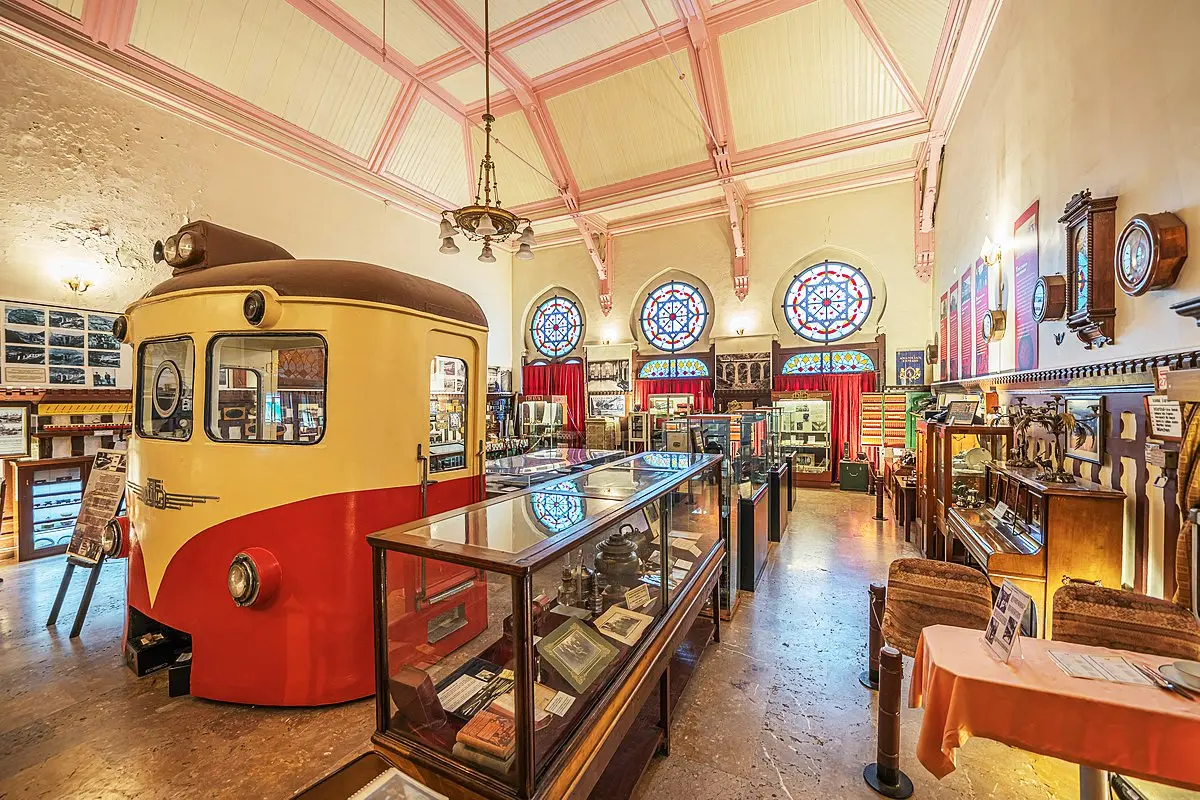If you enjoy time travel, then the Turkish Railways Museum located trackside of Sirkeci Station (otherwise known as İstanbul Gar) is for you. It is compact in size yet offers enough absolutely amazing artifacts from a number of periods, including the Ottoman era. Having been there on a number of occasions and most recently with our daughter I feel tempted to call it a true İstanbul gem.
Once inside, the museum history comes alive, letting both young and old marvel at how past generations traveled by train. What’s more, we learn about the construction of the station and how the Turkish railroad network developed; we see and are allowed to sit on (!) furniture from stations and even a part of an original dining car complete with white linen, china and cutlery. There are timetables, hats and uniforms. There are manual typewriters, filing cabinets and first-aid kits.
Personally speaking, I enjoyed the large amount of black and white photos that are on display as well as the period furniture that is immaculately preserved, yet as it is in parts a “hands-on” museum it can actually be touched and felt. For her part, my daughter liked best a life-size (part) model of a train driver’s cabin taken from the 1955 electrified suburban train.
Making a visit to the museum even more of an attraction is the fact it is housed in a landmark building that once symbolized the grand old era of cross-continent rail travel. Sirkeci Train Station began its life as the final destination of the famous Orient Express in the year 1890 after Sultan Abdülhamit II had commissioned German architect August Jasmund as his principal advisor for this huge undertaking.
Whilst spending time at the museum I came across a very helpful summary prepared by the Turkish State Railways (TCDD) and published on their website — link added below. I learned, for example, that the sea reached right up to the building and that on both sides of the middle entrance turret clocks decorated the enormous building and that there were restaurants in abundance, too (five locales to be precise).
Another fascinating anecdote from the past tells us about whether Sultan Abdülaziz who reigned before Abdülhamit II took over would be in favor of having the tracks laid right through the lush gardens of Topkapı Palace. Eventually, the sultan agreed and thanks to this decision travelers would travel right in the heart of the city. Although the Sirkeci Station building was erected after his death Sultan Abdülaziz is today referred to as the person who established the Ottoman Empire’s railroad network.
If time is on your side why not combine a visit to İstanbul Gar by taking a look at its even bigger sister, Haydarpaşa Station, located a 25-minute or so ferry boat ride away. Although it is currently closed to make way for the high-speed Istanbul-Ankara railway, you can still admire the building’s architecture from the outside. You could then tell friends and family that you traveled between the two grandest of İstanbul train stations on water instead of on land, a much entertaining attraction in this always fascinating metropolis.
The museum is closed on Sundays and Mondays, but is otherwise open from 9 a.m. until 5 p.m. Further details can be found on the www.tcdd.gov.tr website: click on English, Museums, then İstanbul Railway Museum and you will locate the entire version of the background story I mentioned above, too.
Perhaps most importantly the ever friendly museum’s manager, Serdal Bey, is all too happy to let you in on the secrets of his treasure trove’s many exhibits. If a museum were to be rated similar to a restaurant or hotel — 10 out of 10.

